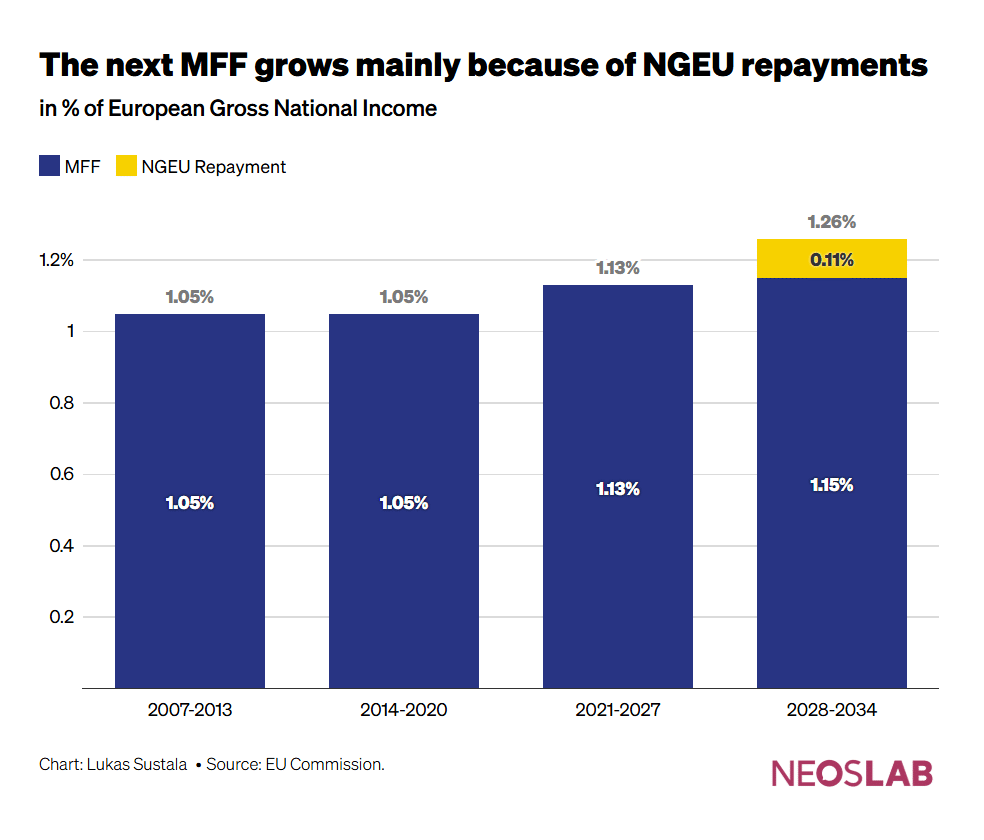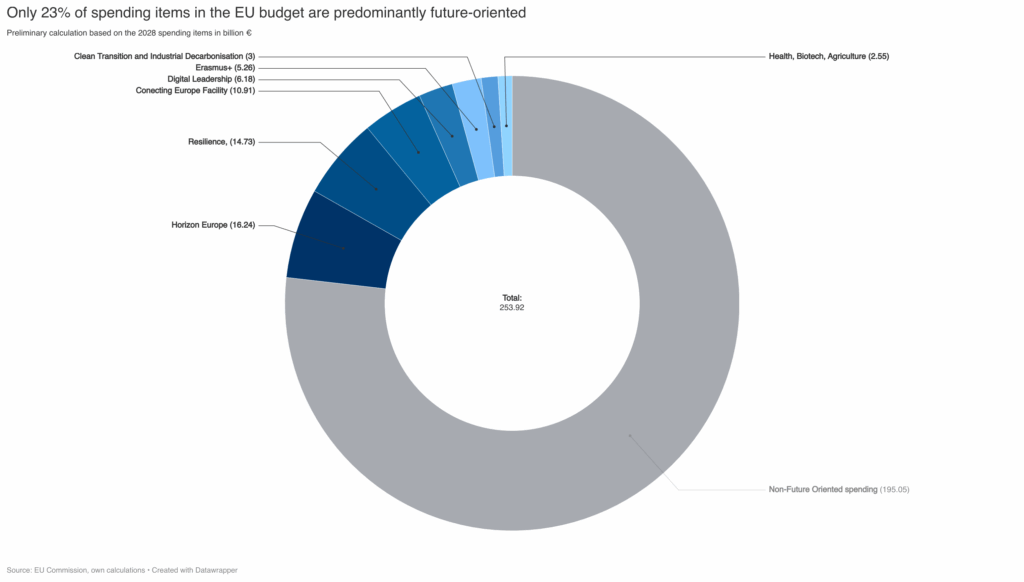29 July 2025
The new MFF: Time for Bold Choices?
While acknowledging crucial strategic areas, the current MFF proposal remains rather conservative and might be cut back further. The proposal is still far off from future-proofing the European budget. Institutionalising proposals such as a Future Share concept to safeguard future-oriented investments would ensure Europe’s strategic autonomy, global competitiveness, and long-term resilience. Otherwise, even ambitious visions might become lost in translation.


